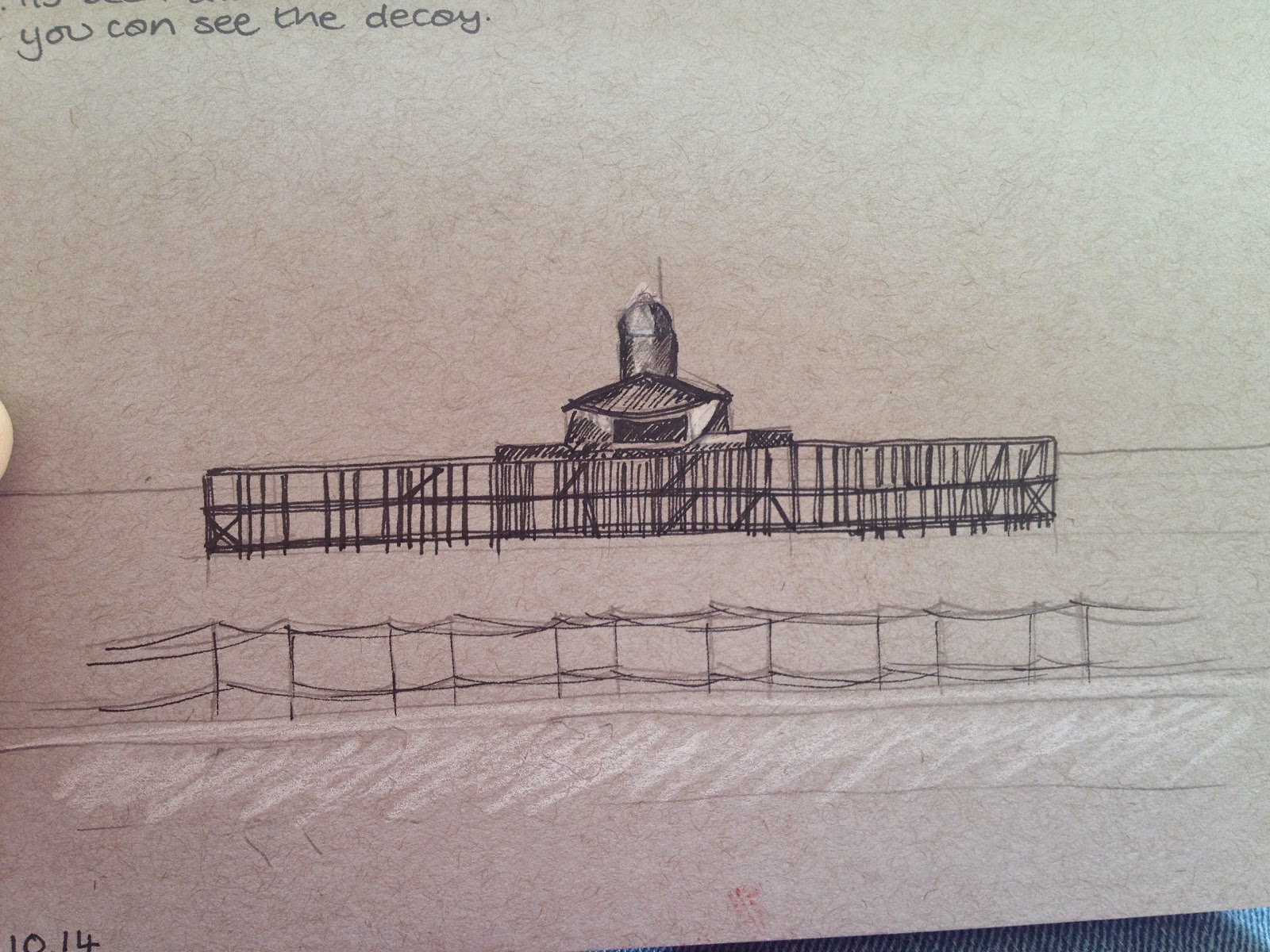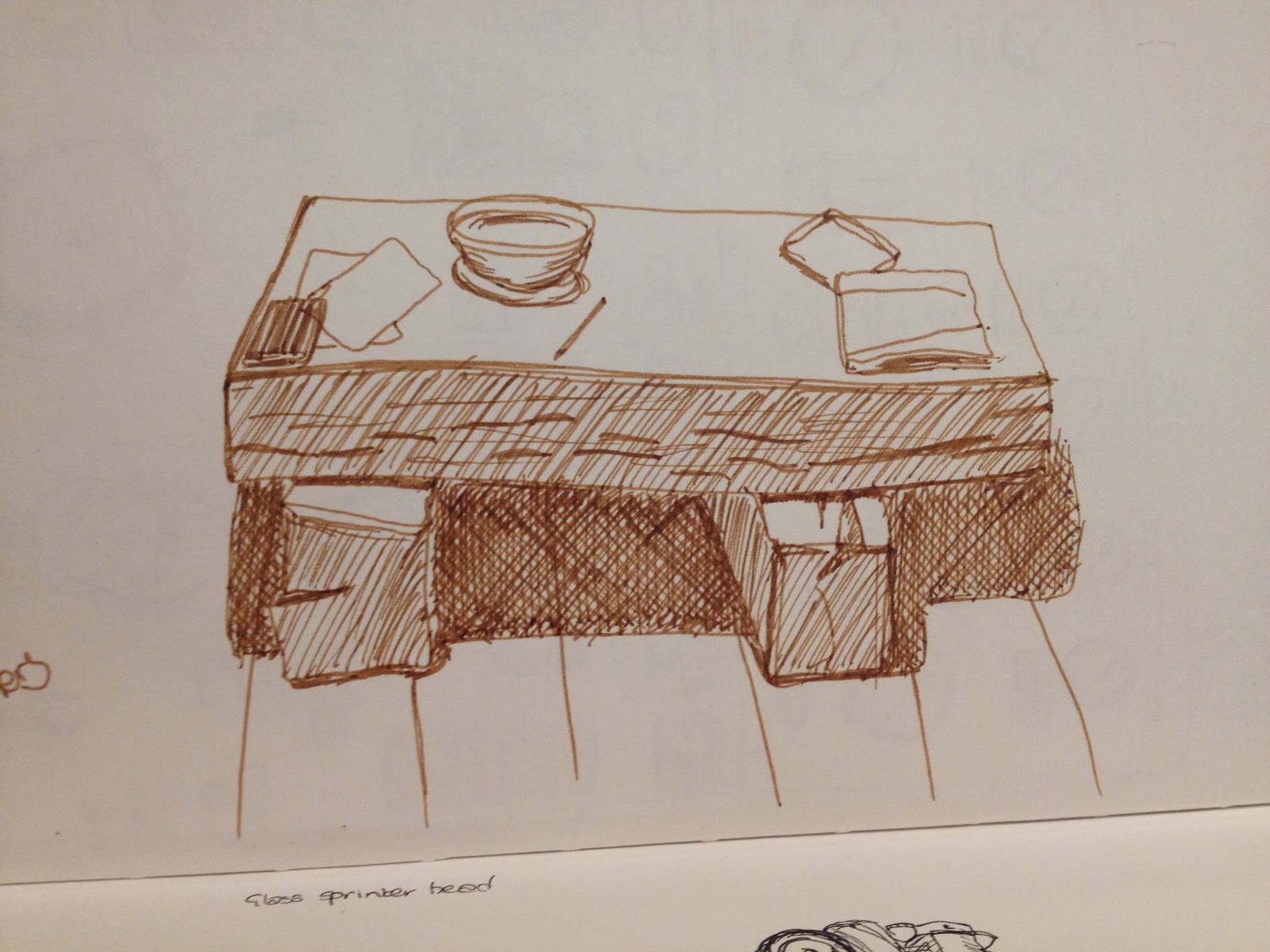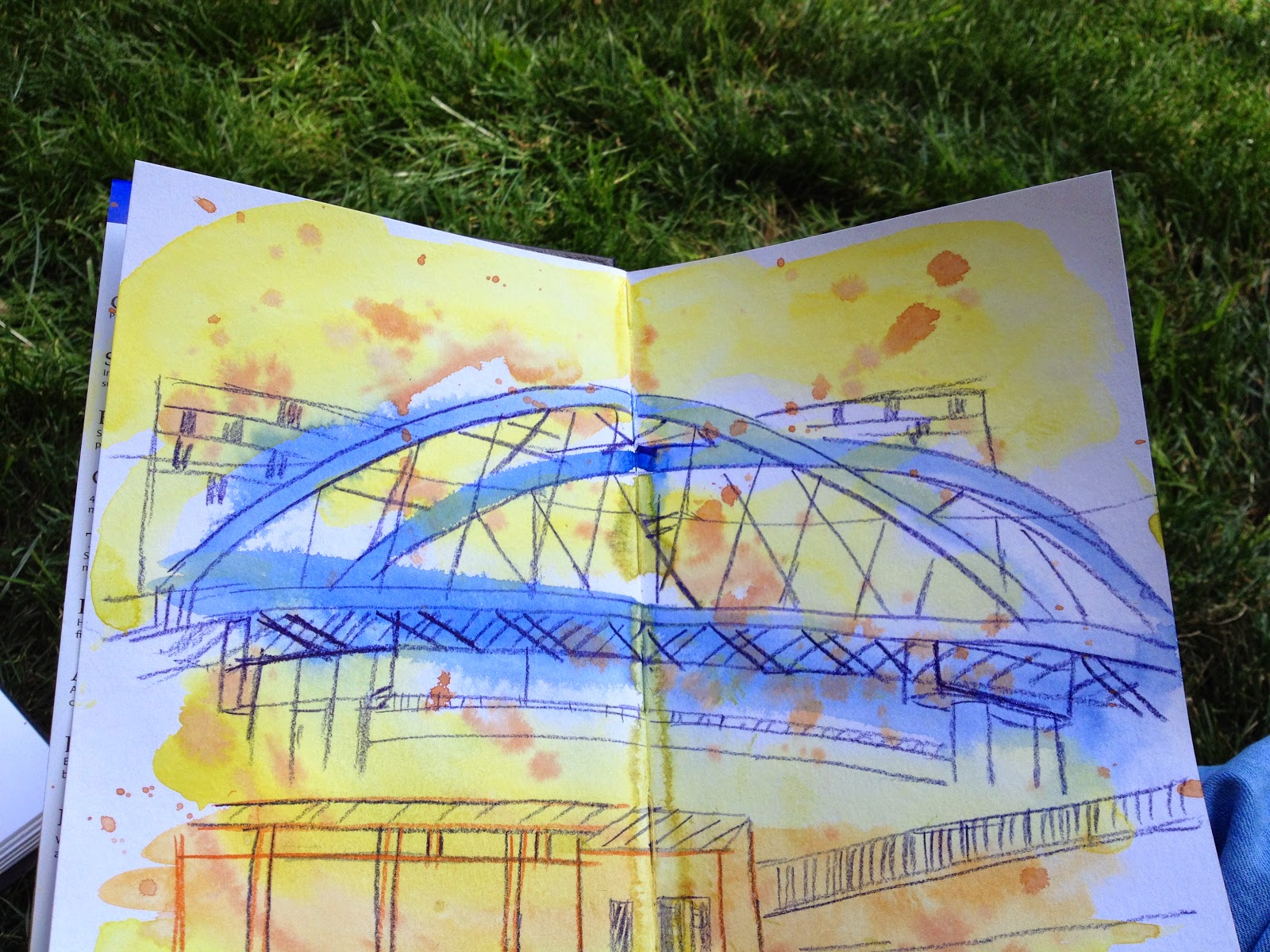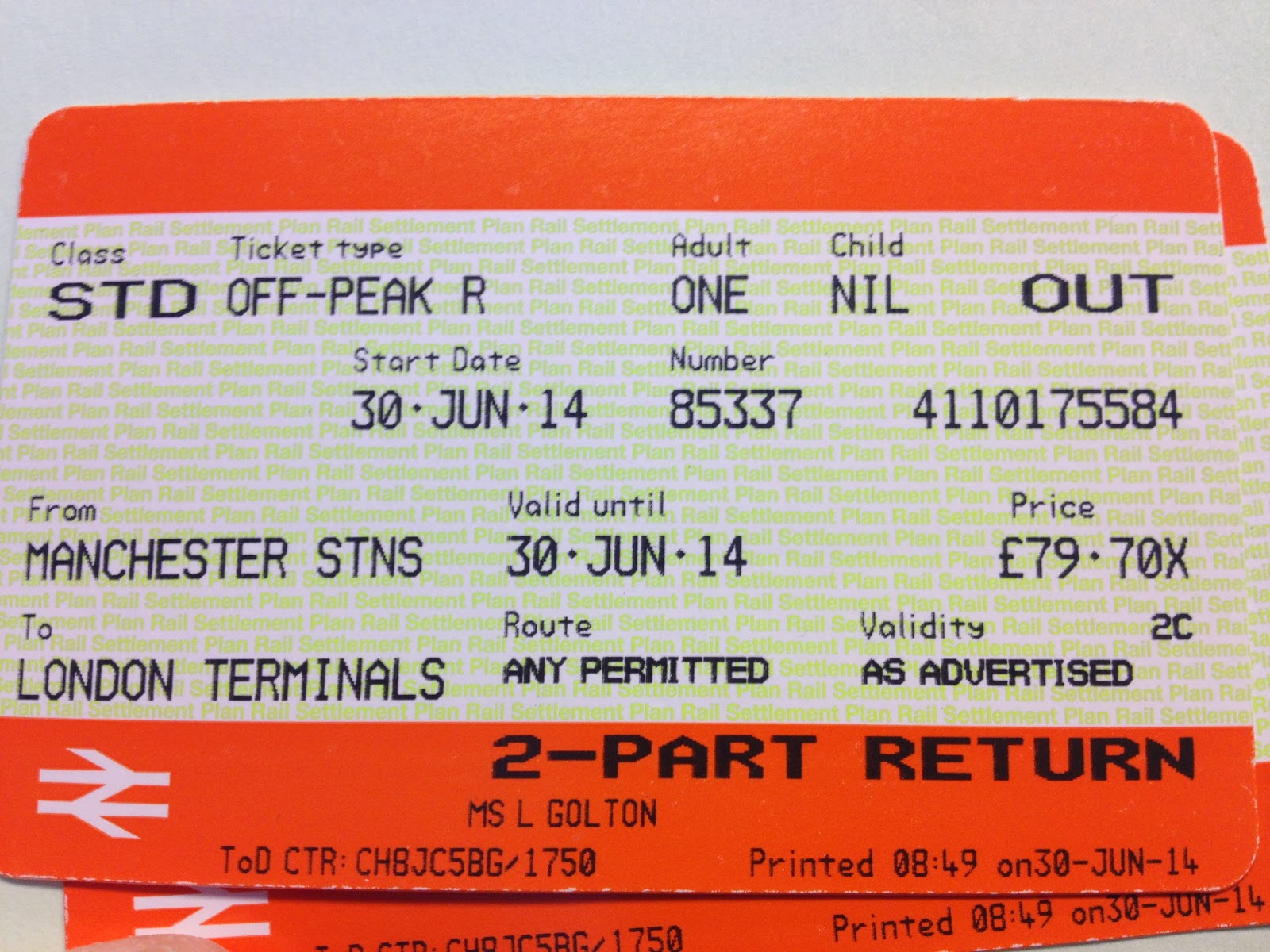...or what I wish someone had told me at the start of the year.
As I write this I’m sat at a café in a small seaside town where my family live; I‘m reflecting on my urban sketching adventures and thinking about what I would tell myself as I sat here last New Years Eve having not picked up a pencil in 15 years. Perhaps this might inspire someone else to pick up a pencil and draw his or her life.
 |
| The remains of the pier in the seaside town where my family live |
1 – draw, draw, draw – the more you draw, the better you get. It’s all about practise not making it perfect.
2 - Draw the everyday things around you, the coffee cup, the cake, the pens you use, and the shoes on your feet.
 |
| The coffee table at a friend's house |
3 – Don’t rub out those mistakes, learn from them and live with them. Often when I thought I had done a lousy drawing, I looked again, a while later and could appreciate it much more.
4 – Don’t get sucked into thinking you have to have the right materials to draw – use what you have, if you don’t like it what you have then ask for advice from others, borrow stuff and try it out and if you don’t like something – perhaps, find it a new owner or home. Don’t think that having the most expensive stuff is the key – three pencils, a waterbrush and a pen were used in my favourite sketch of the year.
5 – Try not to work across too many sketchbooks – taking them all out makes your bag very heavy.
I’m now working across 3 – an A4 moleskine, a medium sized one and a Stilman and Birn Epsilon book…
6 – Date your sketches and number your sketchbooks – it helps to see your progress
7 – Your sketchbooks are precious –but not so precious you are scared to make mistakes or not use them.
8 – Ask for advice and feedback from others, it can be a little nugget of advice that can move you forward. One of the best I received was two words about drawing people ‘draw bigger’. Thank you, Lynne.
 |
Tram bridge in Sheffield, one of the pieces produced in a workshop run
by Lynne Chapman - Afraid of Colour? |
9 – Add your thoughts to a sketch, it helps to remember what you thought of it, what mistakes you
noticed and what you thought went well.
10 – Carry a sketchbook and a pencil or pen… always.
11 – Draw often, short but everyday is better than 4 hours once a month. If you think you don’t have time, turn the TV off and turn on your creativity.
12 – You don’t have to share your sketches until you are ready to. My early ones were not seen by anyone.
13 – Drawing ‘bits’ is less intimidating – a nose, ear, foot, window, door rather than a whole person or building.
14 – The ephemera of life can be worth keeping – I spent a lot of time on trains – those tickets are stuck into the sketchbooks… collage is art…

|
| One of the many train tickets from this year. |
|
15 – Review your sketching kit regularly otherwise you will take everything including the kitchen sink. Make each piece earn a place in your daily kit. Thanks Liz Steel.
|
Part of my kit, drawn one evening
16 – A little bit of perspective knowledge goes a long way
17 – Simplify – you don’t have to draw everything, exactly as it is.. embrace wonkiness. See the stained glass window in this painting.
I simplified the stained glass in this window and experimented with wet in wet watercolour (with bunny)
18 – Eventually you find some materials and a style, enjoy them but carry on developing, experimenting and learning.
19 – Add observations to your sketches – my favourite from a gentleman while his daughter watched me ‘it’s like photography, only slower’
20 - Seek out and share inspiration with others, follow them on facebook, twitter, pintrest, flickr, post your sketches online, join an online class, watch a you tube video… look for those nuggets to help you move on.
This was done after taking Paul Heaston's class on Craftsy
21 - Don’t give up, when you look back you will be able to see progress.
With thanks to all the Urban Sketchers who I have met, followed and/or drawn with from across the world. Particular thanks to Lynne Chapman, Simone Ridyard, Mike Dodds, Adelina Adelydee, Ann Marie Percival, Andrea Joseph, Paul Heaston and Liz Steel.
Below is my picture of the year; one of the totem poles in the British Museum - a culmination of all the advice from above :o)
























